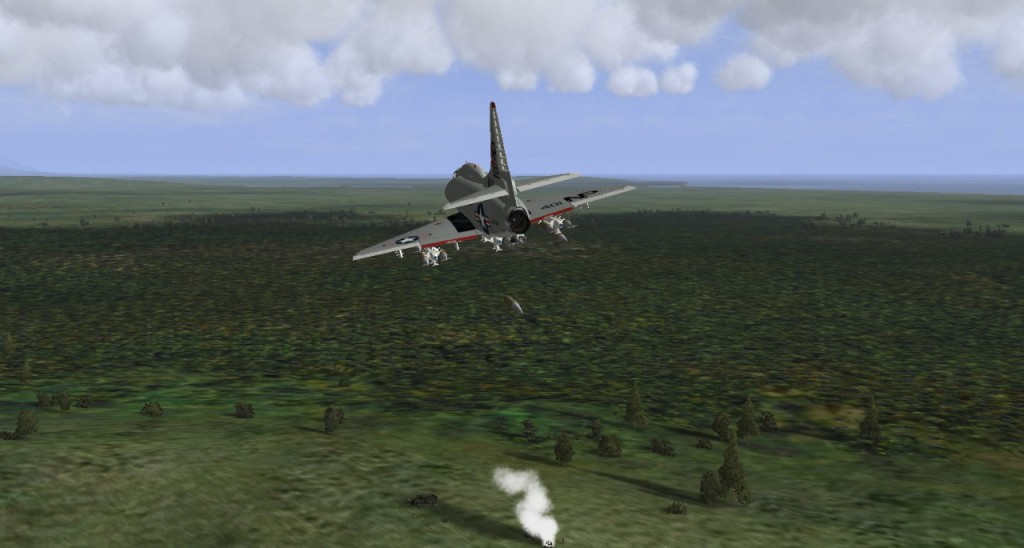This is the one-hundred-and-eleventh in a series of posts on the Vietnam War. See here for the previous post in the series and here to go back to the master post.
There is a series of scenarios tucked away with the Marine Jet Age missions, perhaps designed to be played as a campaign. The set is called The Siege of Khe Sanh by Monty27. It stands out for its “story”, yes, but also because it is set up like a tutorial or a learning campaign.

Siege has you take the role of a Marine pilot stationed at Da Nang* as the attack on Khe Sanh develops. Rather than starting you out right-off flying tough, historically-based missions, the sequence eases you into the fight. The first mission involves simply piloting a Piper Cub, which provides the player a bit of an opportunity to practice take-off and landing at the “home” airstrip with a very forgiving plane.
Combat action, starting in the second scenario, requires you to switch over to the A-4 Skyhawk. Relative to my past experience the A-4, too, seems like one of the easier aircraft to fly. It surprised me a bit but I don’t think I’ve flown this plane before despite it being in action from the very beginning of American operations in Vietnam. On top of the easier flight characteristics it is also helpful that these are U.S. Marine aircraft. That is to say, they don’t have to launch from a carrier. They get a nice long runway at Da Nang. Or Chu Lai. Wherever.

If that weren’t enough, satisfaction can be derived from NOT having to fly more Rolling Thunder missions. By 1968, flying over North Vietnam had become very dicey indeed. Even entirely historic scenarios can present a long shot for the player. That’s before a scenario designer decides to add a dozen MiGs to spice things up a bit.
Close Air Support was obviously no picnic – it wouldn’t have been like flying a Piper Cub around Da Nang. Your enemies on the ground are going to be shooting back at you. In this simple scenario, I lost a tail flap to ground fire which ultimately resulted in my lying dead on the runway. OK, let’s face it, I have trouble with landings even without any damage, but damaged controls didn’t help. My point is that one or two anti-aircraft guns are a lot more manageable than SAMs and those dozen MiGs.
Plus, as I say, it was a simple scenario. The targets are laid out simply and clearly to help me focus on trying to get everything right. This solves one of those things I’ve been struggling with these jets – the lack of hand-holding tutorials to help me get up to speed on the basics. The Siege of Khe Sanh is a nice find in that regard.
One last remark, because it is something else I’ve not seen before. Rather than lay out the mission with a flight path and waypoints, following the example of most scenarios, this one uses mission goals. The various stations are on the map as “missions.” If you follow the instructions and get to the right position, you’ll get victory points. Was this meant as a way to disable the “autopilot” as a crutch? Is it meant to provide a more “realistic” experience, forcing you to be guided by pre-flight instructions and in-flight communications rather than purely a pre-planned path? Some of each? It confused me at first but it works well enough now that I’ve figured it out.
Return to the master post or read on for a pair of scenarios that aren’t quite so basic.
*The scenario notes explain that the squadrons modeled actual flew out of the airbase at Chu Lai but that the map being used does not included that facility.

Pingback: Giggity | et tu, Bluto?
Pingback: Painted Wings and Giant’s Rings | et tu, Bluto?